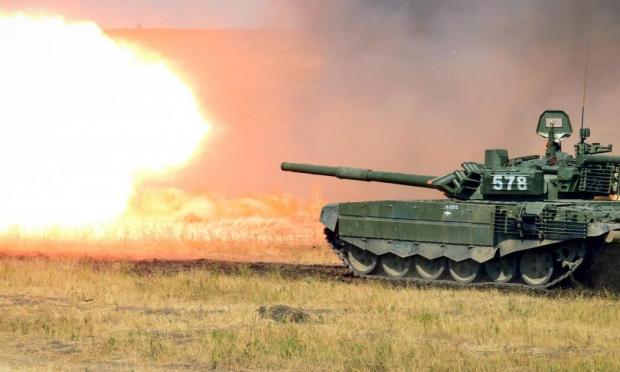Western sanctions are complicating Russia's efforts to upgrade its fleet of T-72s for the war in Ukraine, according to Foreign Policy Research Institute analyst Robert Hamilton. Spare parts for Russia's most advanced tank gun, which it acquired through "not quite legal means" from a French supplier some ten years ago, are increasingly unavailable.
So the Kremlin is "upgrading" its tanks with less capable Russian-made guns that reduce the range from four miles to two miles. Perhaps most worryingly from the Kremlin's perspective, the T-72 and most Russian tanks suffer from an ammunition storage design flaw whereby a hit almost anywhere in the turret causes the ammunition to explode, killing the crew instantly and often throwing the turret dozens of meters into the air.
With at least 1,600 tanks already lost in Ukraine, the Russian military is faced with a dilemma. He can either deploy more of his most advanced tanks there, depleting his forces for other contingencies, or he can empty his stores of older model tanks in the hope that enough of them will be enough to make a difference on the field of battle. Both options come with problems.
Russia has only about 600 of its advanced T-90 tanks, and only about 400 of them are repairable. It has even fewer of its most advanced tanks, the T-14 Armata, which is considered on par with NATO's best tanks. Russia originally planned to buy 2,300 T-14s, but cut that to just 132. Several hundred advanced tanks would certainly make a difference in Ukraine, but would leave Russia dangerously exposed elsewhere, especially along its western flank bordering NATO countries.
Emptying the stores from older armored tanks in long-term storage would also not be a panacea. While Russia has up to 10,000 tanks "resting" in its warehouses, these are often in terrible condition. A main reason for this is a familiar one in Russia: corruption.
Ukrainian military intelligence claims that only about 10% of the tanks in Russian warehouses can be repaired, noting that "optical devices and electronics containing precious metals were stolen from the combat vehicles", some of which were "completely disassembled" and still remain and without engines. Other sources confirm the impact of corruption on the capability of Russian tanks. In some damaged Russian tanks, Ukrainian troops discovered that explosive reactive armor designed to defeat attacks on the tank had been emptied, "with only a few of the necessary components intact and no evidence that the relatively valuable explosives had ever been there."



